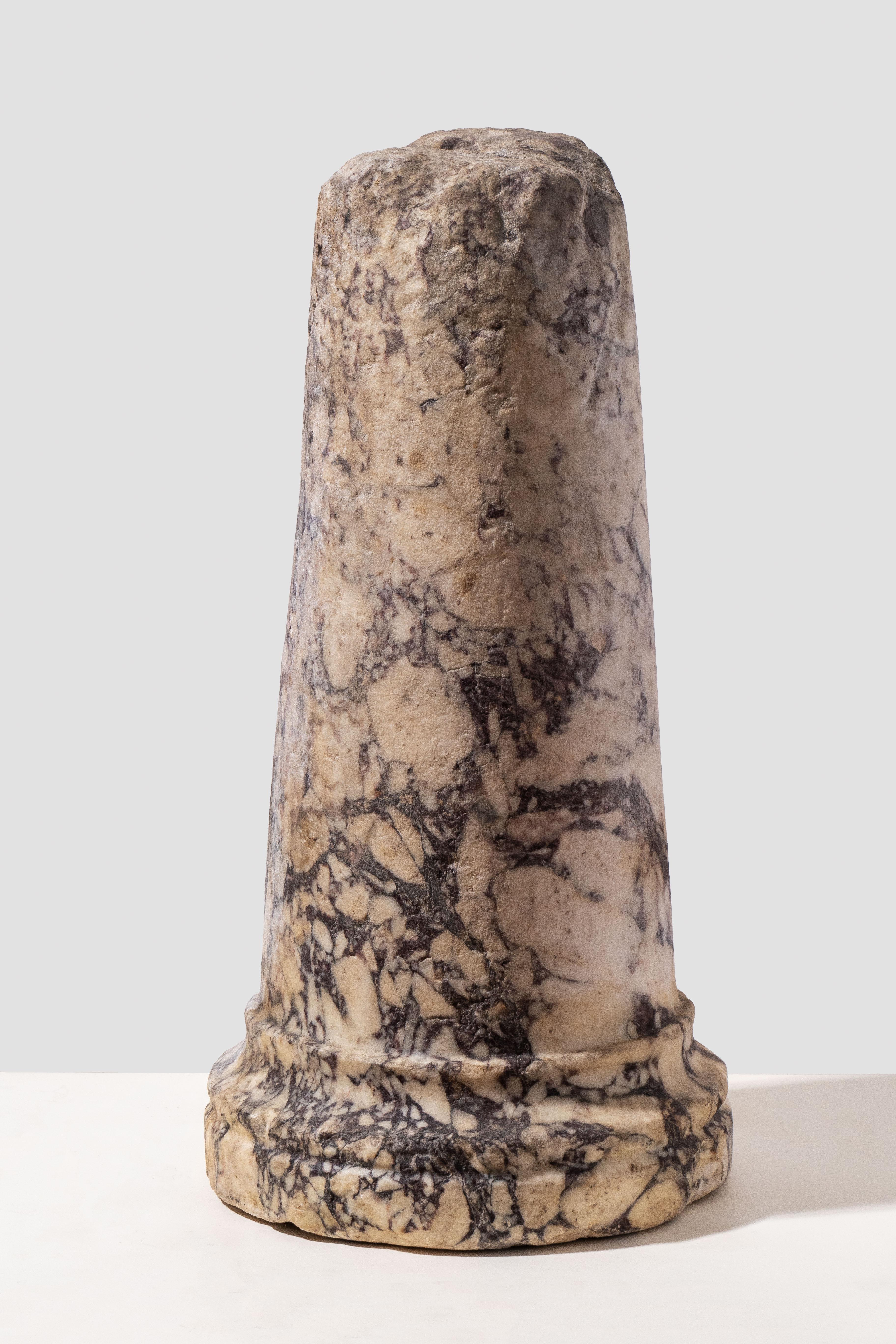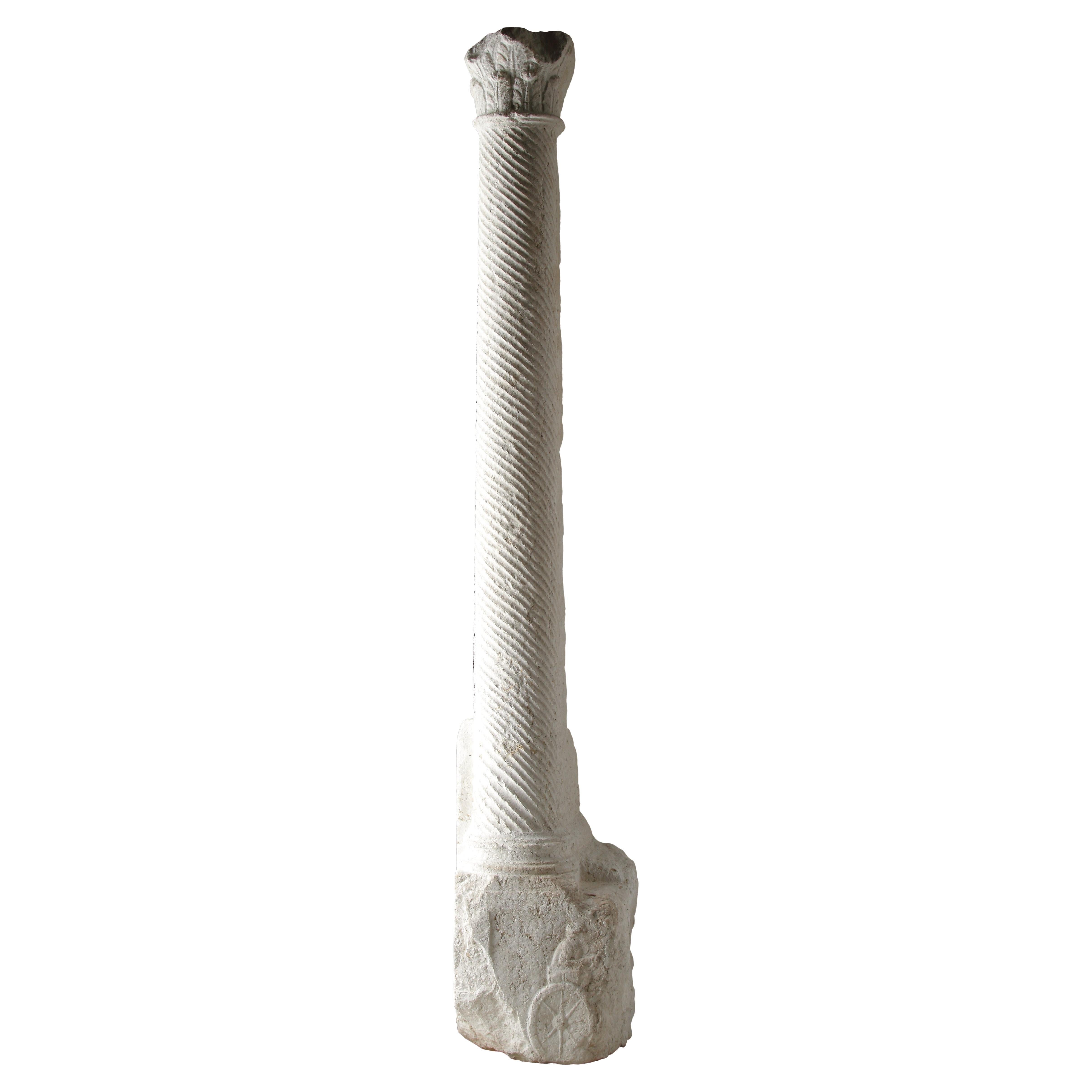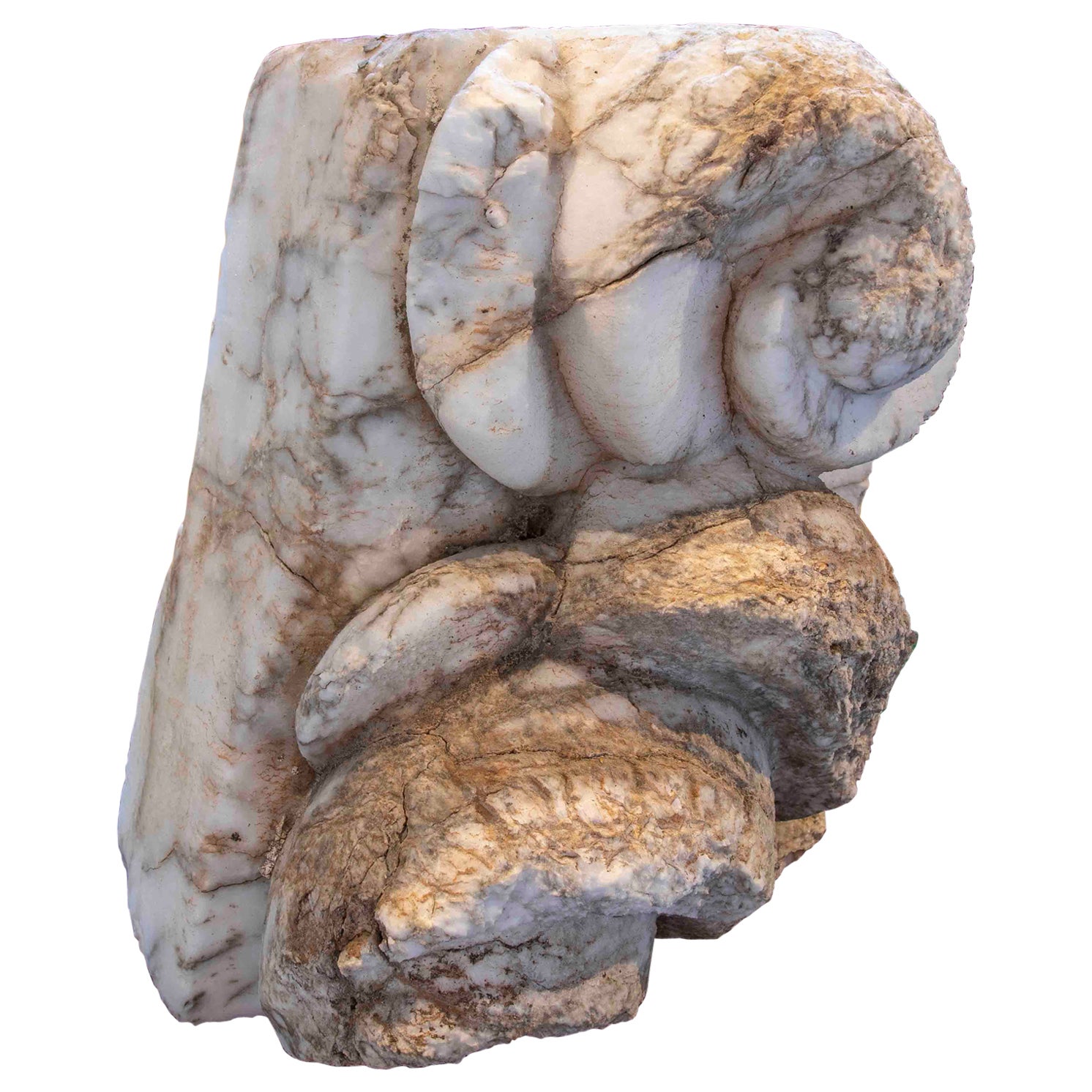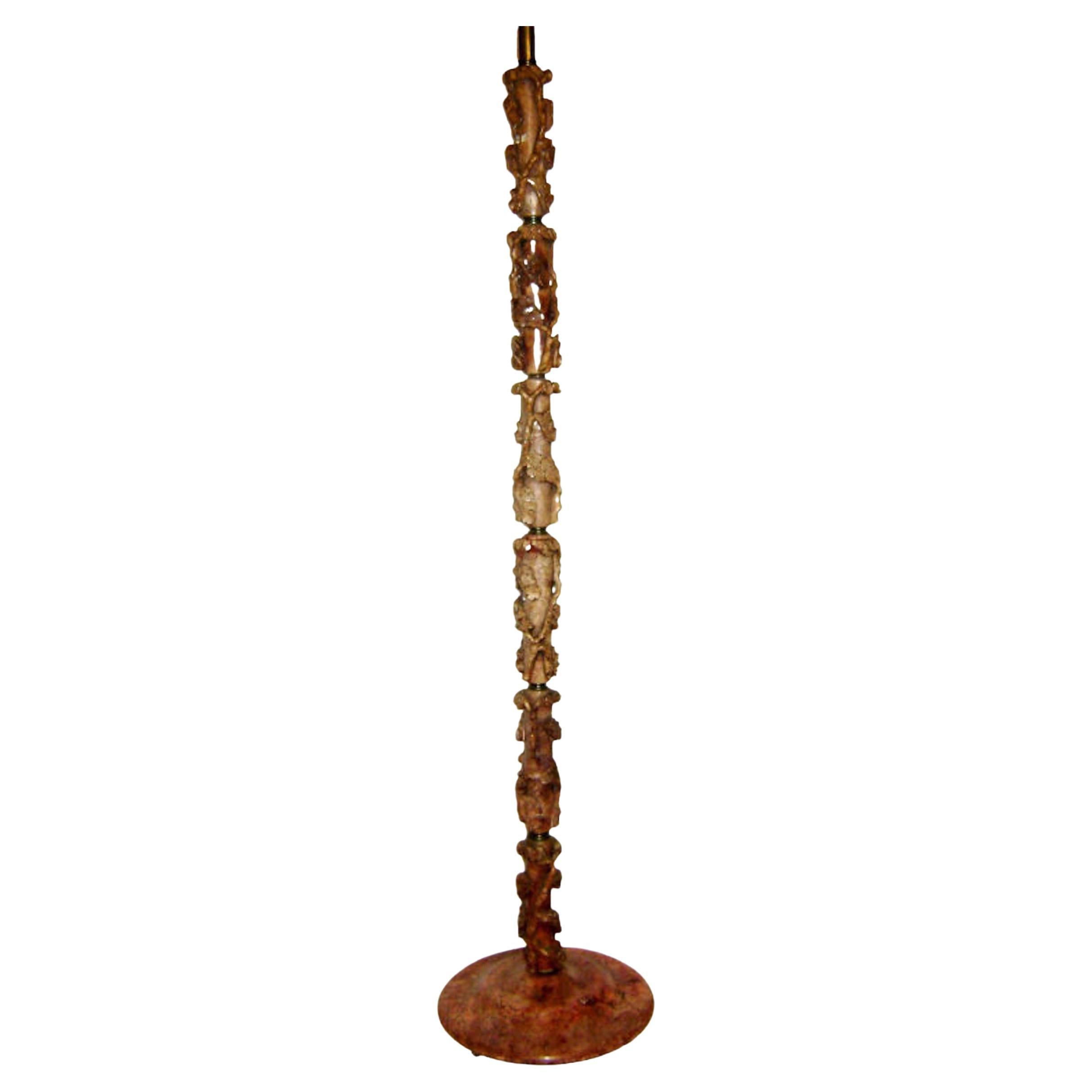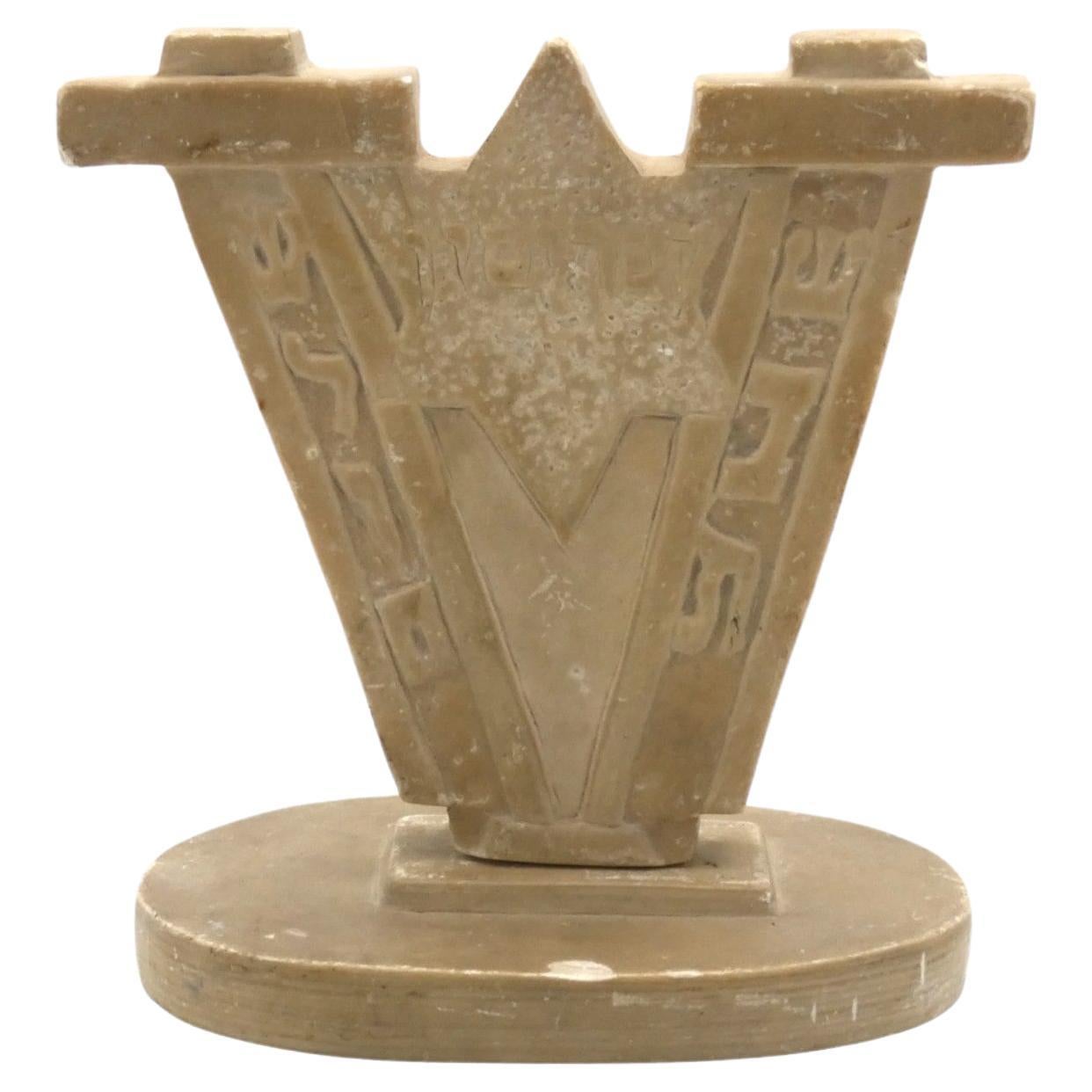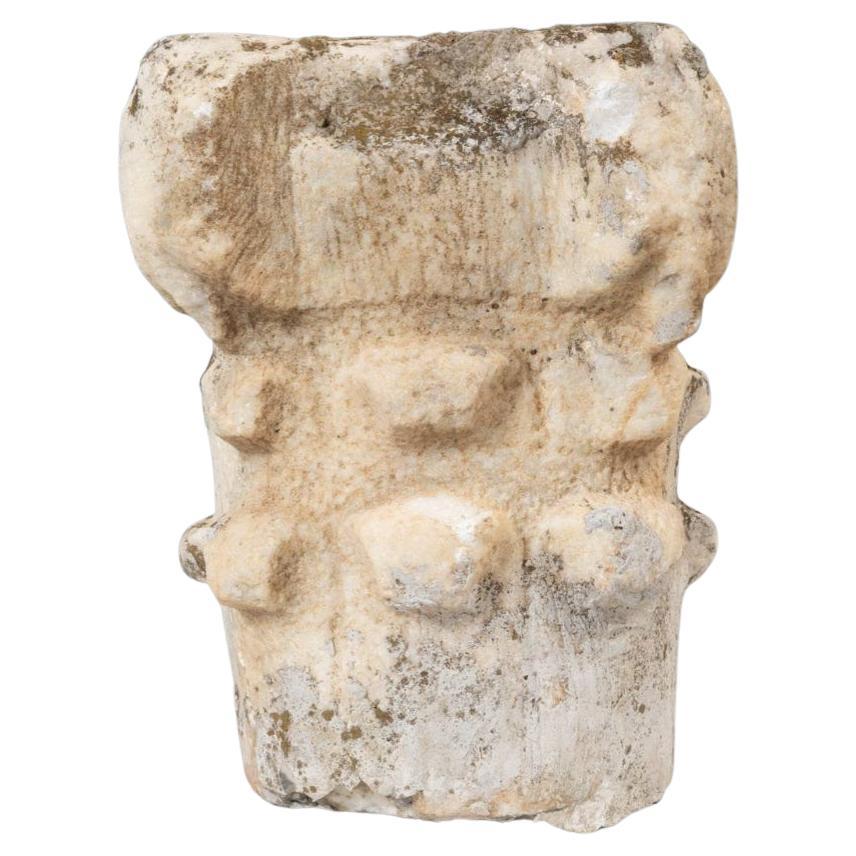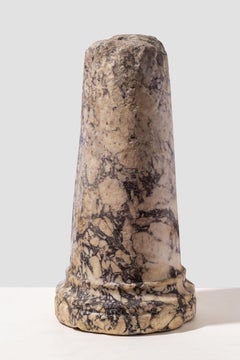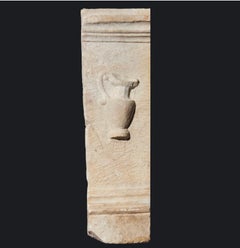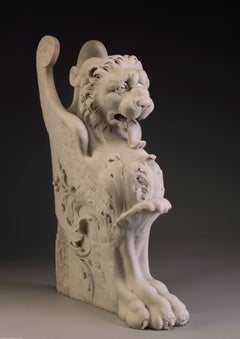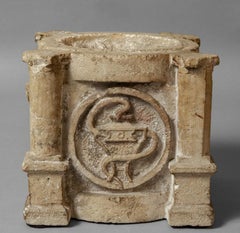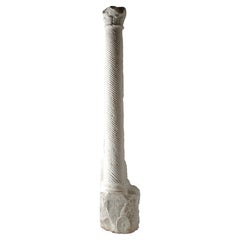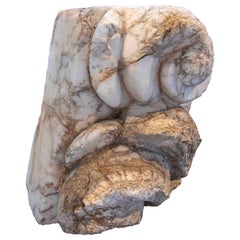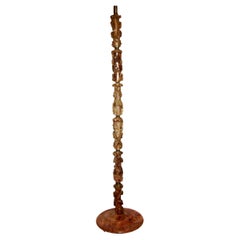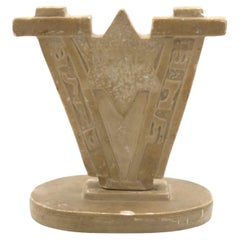Items Similar to WHITE MARBLE CANDELABRUM SHAFT AFTER THE ANTIQUE, 19TH CENTURY
Want more images or videos?
Request additional images or videos from the seller
1 of 2
UnknownWHITE MARBLE CANDELABRUM SHAFT AFTER THE ANTIQUE, 19TH CENTURY19th Century
19th Century
$903.14
£668.21
€750
CA$1,248.75
A$1,370.97
CHF 715.24
MX$16,590.69
NOK 8,964.42
SEK 8,446.84
DKK 5,710.52
About the Item
19th century sculpture depicting a roman carved-marble candelabrum shaft richly decorate with leaf motive. In excellent condition, this fine sculptures measures 26 cm in width and shows a patina consistent with age.
- Creation Year:19th Century
- Dimensions:Height: 10.24 in (26 cm)Width: 3.15 in (8 cm)Depth: 3.15 in (8 cm)
- Medium:
- Period:
- Condition:
- Gallery Location:Milan, IT
- Reference Number:Seller: OY00031stDibs: LU154428428912
About the Seller
5.0
Vetted Professional Seller
Every seller passes strict standards for authenticity and reliability
Established in 2020
1stDibs seller since 2021
8 sales on 1stDibs
- ShippingRetrieving quote...Shipping from: Milan, Italy
- Return Policy
Authenticity Guarantee
In the unlikely event there’s an issue with an item’s authenticity, contact us within 1 year for a full refund. DetailsMoney-Back Guarantee
If your item is not as described, is damaged in transit, or does not arrive, contact us within 7 days for a full refund. Details24-Hour Cancellation
You have a 24-hour grace period in which to reconsider your purchase, with no questions asked.Vetted Professional Sellers
Our world-class sellers must adhere to strict standards for service and quality, maintaining the integrity of our listings.Price-Match Guarantee
If you find that a seller listed the same item for a lower price elsewhere, we’ll match it.Trusted Global Delivery
Our best-in-class carrier network provides specialized shipping options worldwide, including custom delivery.More From This Seller
View AllANTIQUE ITALIAN ARCHITECTURAL FRAGMENT OF PLINTH IN 'BRECCIA MEDICEA' MARBLE
Located in Milan, IT
BRECCIA FRAGMENT PLINTH
Italy, 18th Century
Breccia medicea
55 x d 25 cm
21 3/4 x d 9 3/4 in
Category
18th Century More Art
Materials
Marble
ANCIENT ROMAN MARBLE ALTAR FRAGMENT, 1ST/2ND CENTURY A.D.
Located in Milan, IT
Roman Marble Altar fragment from the 1st/2nd Century A.D. with the typical element of Roman rituals.
Provenance: Nicolas Koutoulakis (1910-1996), Paris...
Category
15th Century and Earlier Figurative Sculptures
Materials
Marble
ITALIAN MARBLE FIGURE OF A GRIFFIN, 19th Century
Located in Milan, IT
ITALIAN MARBLE FIGURE OF A GRIFFIN
Italy, early 19th Century
marble
87 x 54 x 20 cm
34 1/4 x 21 1/4 x 7 3/4 in
Category
19th Century Abstract Sculptures
Materials
Marble
14th Century Italian Marble Mortar with Animals depicted on the sides
Located in Milan, IT
Unusual 14th Century Italian marble mortar with animals depicted on the sides
Category
15th Century and Earlier Sculptures
Materials
Marble
LARGE ITALIAN RENAISSANCE MARBLE CAPITAL, 15th/16th Century
Located in Milan, IT
LARGE ITALIAN RENAISSANCE MARBLE CAPITAL
Florence, 15th/16th Century
marble
38 x 47 x 47 cm
15 x 18 1/2 x 18 1/2 in
Category
16th Century Figurative Sculptures
Materials
Marble
PORTORO MARBLE FLUTED COLUMN Rome, 18th Century portoro marble 121 x 36 x 36 cm
Located in Milan, IT
PORTORO MARBLE FLUTED COLUMN
Rome, 18th Century
portoro marble
121 x 36 x 36 cm
47 3/4 x 14 1/4 x 14 1/4 in
Category
Mid-18th Century More Art
Materials
Marble
You May Also Like
A Rare and Important Late Roman Marble Column
Located in London, GB
A Rare and Important Late Roman Marble Column
With a fluted spiral central column shaft rising to a carved integral capital with Corinthian ‘acanthus’ leaf decoration, the base with ...
Category
Antique 15th Century and Earlier Greek Antiquities
Materials
Marble
Building Coping Carved in Marble with Rounded Volute Shapes
Located in Marbella, ES
Building Coping Carved in Marble with Rounded Volute Shapes.
Category
Antique 17th Century Italian Architectural Elements
Materials
Marble
Single Carved Marble Floor Lamp
Located in New York, NY
A circa 1920’s Italian carved marble floor lamp in Chinoiserie style.
Measurements
Height of Body: 58?.
Category
Vintage 1920s Italian Floor Lamps
Materials
Marble
Marble Shabbat Candlestick, Cyprus 1948
Located in New York, NY
This Marble Shabbat Candlestick from Cyprus made in 1948-49 holds important historical significance. During that period, Cyprus served as a significant transit point for Jewish immigrants en route to Israel, particularly after World War II and during the struggle for Israeli independence.
During World War II the British enacted a policy known as the White Paper of 1939 that contained strict quotas for Jews who attempted to immigrate to Palestine. During the 1940s, camps were set up in Cyprus by the British government for the internment of Jews who violated this policy. Repeated requests to lift the immigration restrictions to save European Jews from certain death were ignored, and untold lives were lost. After the war ended, the British still enforced the White Paper, and Cyprus became home to thousands of Holocaust survivors caught trying to enter Palestine. Once again, Jews were kept under armed guard and behind barbed wire
Life was not easy for the Jews held in Cyprus, living conditions were below that of German prisoners of war, as standards for POWs were set by the Geneva Conventions. Since there were no precepts for civilian prisoners, these European Jews were treated worse than their captured German oppressors. During the years the camps of Cyprus were in operation, approximately 50,000 people were imprisoned and thousands of children were born.
Between 1948 and 1949, artistic detainees developed a unique genre of Judaica. From the local stone found on the grounds of the camp, a range of objects was carved, sometimes bearing motifs of tents, symbolizing the life of the interned. These objects were usually inscribed in Hebrew with the word "Kafrisin" (Cyprus)
This marble candlestick is one of those items. "Shabbat Shalom" flanks a Star of David with "Kafrisin" in its center, with two holes at the top for wicks and oil. The candlestick itself symbolizes resilience and continuity amidst upheaval. Marble, a durable and beautiful material, contrasts with the uncertainty and challenges faced by Jewish communities during that era.
Even after the establishment of the State of Israel on May 14, 1948, the British government continued to hold 8,000 Jewish men of military age and 3,000 of their wives, in order to prevent them from joining the 1948 Arab-Israel War, known by Israelis as the War of Independence. In February 1949, the British government decided to recognize the State of Israel, and all prisoners in the Cyprus camps were released.
Owning such an artifact connects one directly to the Jewish historical narrative of migration, survival, and the eventual establishment of Israel. It serves as a tangible reminder of the challenges faced and overcome by Jewish communities during one of the most pivotal periods in modern Jewish history.
Literature taken from the Book, "Jewish Antiques...
Category
Vintage 1940s Cypriot Candle Lamps
Materials
Marble
$3,840 Sale Price
20% Off
Caliphate Period 10th Century Hispano-Muslim Capital of Marble Pilaster Cordoba
Located in Marbella, ES
Hispano-Muslim pilaster capital, probably Córdoba, Caliphate period, 10th century.
Material: marble.
Measurements: 35 x 26 x 25 cm.
Hispano-Muslim pilaster capital, probably Cor...
Category
Antique 15th Century and Earlier Spanish Pedestals and Columns
Materials
Marble
Italian Ancient Marble Sculpture Fountain, Late 16th Century
Located in Milano, IT
Sea monster
Carrara marble mouth fountain
Italy, late 16th century
It measures 13.8 x 31.5 x 18.9 in (35 x 80 x 48 cm)
State of conservation: some small evident gaps and widespread signs of wear due to outdoor exposure. The gray marks crossing it do not come from restoration, but are rather the natural veins of the marble.
This work has some morphological characteristics typically associated with the iconography of the sea monster: an elongated muzzle, sharp teeth, protruding eyes, elongated ears, and a coiled serpent's tail.
An in-depth series of studies on artistic depictions of the sea monster attempted to verify how this symbol evolved in antiquity in the European and Mediterranean contexts and how it gradually changed its image and function over time. The iconography itself is mutable and imaginative and its history is rich with cultural and artistic exchange, as well as the overlapping of ideas. This occurred so much that it is difficult to accurately pinpoint the "types" that satisfactorily represent its various developments.
However, we can try to summarize the main figures, starting from the biblical Leviathan and the marine creature that swallowed Jonah (in the Christian version, this figure was to become a whale or a "big fish", the “ketos mega”, translation of the Hebrew “dag gadol”). Other specimens ranged from the dragons mentioned in the Iliad (which were winged and had legs) to "ketos” (also from Greek mythology), the terrifying being from whose Latinized name (“cetus”) derives the word "cetacean". See J. Boardman, “Very Like a Whale” - Classical Sea Monsters, in Monsters and Demons in the Ancient and Medieval Worlds, in Papers presented in Honor of Edith Porada, Mainz am Rhein 1987, pp. 73-84).
In Italy the monster underwent yet further variations: it can be found in Etruscan art on the front of some sarcophagi representing the companion of souls, while among the Romans we find the “Pistrice” (cited by Plinio in Naturalis Historia PLIN., Nat., II 9, 8 and by Virgilio in Eneide: VERG., Aen., III, 427), which appeared in the shape of a stylized hippocampus or a very large monstrous cetacean and evolved into a hideous being with a dragon's head and long webbed fins.
During the Middle Ages, the sea monster was the object of new transformations: at this time, it is often winged, the head is stretched like a crocodile, the front legs are often very sharp fins - sometimes real paws - until the image merges with dragons, the typical figures of medieval visionary spirituality widely found throughout Europe (on this topic and much more, see: Baltrušaitis, J., Il Medioevo fantastico. Antichità ed esotismi nell’arte gotica, Gli Adelphi 1997).
In Italy during the 15th and 16th centuries, the revival of classicism - representative of the humanistic and Renaissance periods - led to a different reading of these "creatures". Indeed, the sea monster was also to find widespread use as an isolated decorative motif, especially in numerous fountains and sculptures where dolphins or sea monsters were used as a characterizing element linked to water (on this theme see: Chet Van Duzer, Sea Monsters on Medieval and Renaissance Maps, London, The British library, 2013).
From the morphological point of view, the "sea monsters" of this period are mostly depicted as hybrid figures, in which the body of a mythological or real being (a hippocampus, a sea snake, a dolphin), is joined to a head with a rather indistinct appearance. It was usually characterized by large upright ears, an elongated snout, sharp teeth and globular, protruding eyes; a complex and indefinite figure, both from the symbolic point of view and from that of its genesis.
The work we are examining is placed as a cross between the medieval sea serpent and the Renaissance dolphin, with stylistic features which recall the snake as often used in heraldry (such as the "snake" depicted in the coat of arms of the Visconti - the lords and then dukes of Milan between 1277 and 1447 - and which, for some, may be derived from the representations of the “Pistrice” that swallowed Jonah).
In the search for sources, Renaissance cartography and in particular woodcuts should not be neglected. See for example the monsters of Olaus Magnus, from the editions of the “Historia de gentibus septentrionalibus” (“History of the peoples of the north”) and the natural histories of Conrad Gesner, Ulisse...
Category
Antique 16th Century Italian Renaissance Animal Sculptures
Materials
Carrara Marble
More Ways To Browse
Black And White Paris Photo
Vintage Lithographs
Black And White Photography Ballet
Pop Art Lithograph
Original Travel Posters
Mark Gray
Large Scale Sculptures
Atelier Vintage Paris
Limited Edition Prints Framed
Vintage Op Art
Vintage Adult
1960s Black And White Photos
Ex Libris
Framed Giclee Prints
Vanity Fair Vintage
Advertising Art
Signed And Numbered Lithograph
Hollywood Black And White Photography
